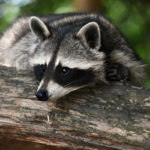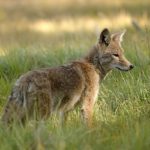Coyotes, Canis latrans, are wild canids native to North America. These mammals are closely related to other canids, such as wolves and dogs. They are typically smaller than wolves but larger than foxes.
The coyote population is very adaptable in nature. These native mammals have widened their natural territory. This is due to the human alteration of their precious landscape as well as wolf intolerance.
Don’t be shocked when you see these canids in your neighborhood! Sightings are not uncommon in urban and suburban areas. They have been coexisting with humans for over a century. With this in mind, it is essential to be knowledgeable about their mating season. This is to take precautions and be careful with their unpredictable behavior.
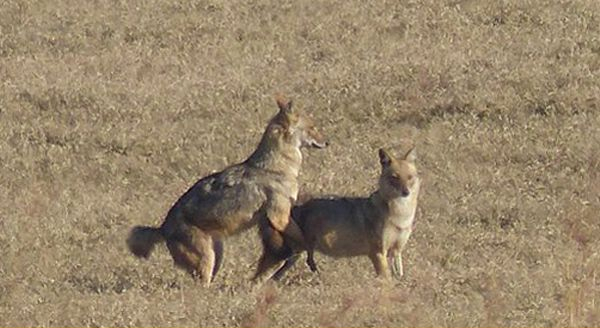
Coyotes Mating Season
The coyote breeding season typically occurs between February and March. This is in accordance with the animals’ location. For coyotes in the southern states, the peak of their mating season is in February. Coyotes located further north do not breed until later on in March.
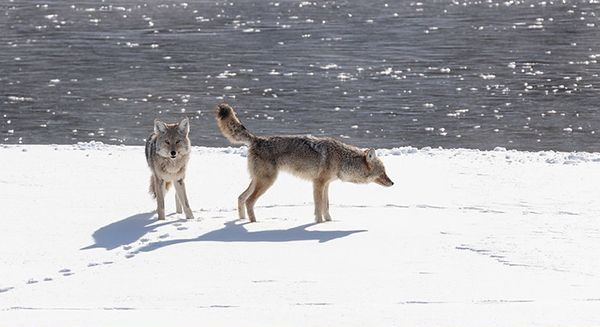
Mating Habits of Coyote
Like any other animal, coyotes exhibit unique behavior as well. These canids develop particular habits as the mating season takes place.
Coyotes will only mate with one female during their breeding season. Afterward, they will return to their solitary lifestyle until the following season. During this time, males wildly howl more frequently and at a higher pitch. These noises warn other coyotes to stay away from their female mates.
Coyotes also become more aggressive and territorial during their mating season. They will attack any animal, creature, or human near their territory. This includes other coyotes that are not part of their pack.
The reason for this is to protect their possible offspring. They want to ensure that their pups have the best chance of survival. These coyotes will also kill any pups that are not their own.
Coyote Gestation
The gestation period of coyotes is 60-63 days long, on average. The female coyote will give birth to two to seven pups. But, the litter size depends on several factors, such as the age and health of the mother. The availability of food is also a significant determining factor.
It is not uncommon for coyotes to have more than one litter in a year. If the female coyote loses her first litter, she will mate again and have another litter later.
How many pups does a coyote give birth to?
Female coyotes can have anywhere from two to seven pups per litter, but the average litter size is four to five. These pups have an unfortunate low survival in the wild. Their survival rate is only 20%, but it gradually rises in the cities.
Factors leading to the low chance of pup survival include starvation, disease, and predation. Maternal abandonment is also a common reason why pups die young.
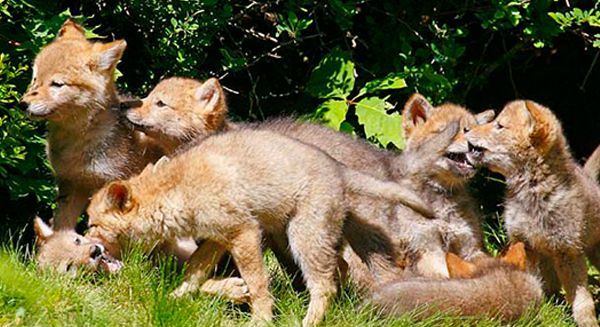
Coyotes Pup
Coyote pups are born in the springtime. They are born deaf, blind, and entirely dependent on their mother’s milk. They are also covered in a fine layer of fur. The eyes of the pups will open after about two weeks. Their hearing develops soon afterward.
These types of young are termed “altricial.“ They are opposite to “precocial” young born with open eyes and can walk soon after birth. Examples of these mammals include ducks, chickens, deer, and horses.
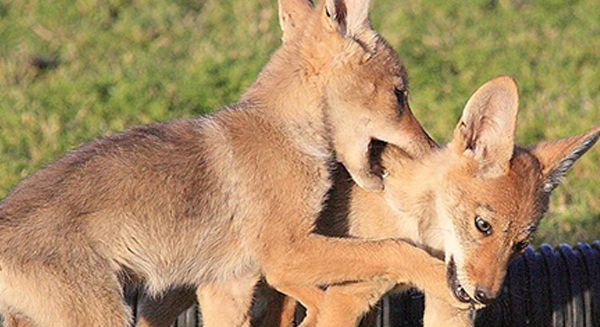
Coyotes pup attacks
Coyote attacks on humans are rare, but your pets are not safe! Coyote assaults rise among pets, especially during mating season. Your dogs and cats when they attempt to approach a coyote den.
Attacks are more prevalent during this period since coyotes tend to be nocturnal, although not strictly. For this reason, paying attention to your cats and dogs is essential. Never leave them unattended with this risk outside, especially at night!
It’s important to know that even with a fence’s existence, your dog, cat, or other pets can attract quarry with these canids. And when you have displayed pet food or smelly garbage in the yard, coyotes will not hesitate to invade your area.
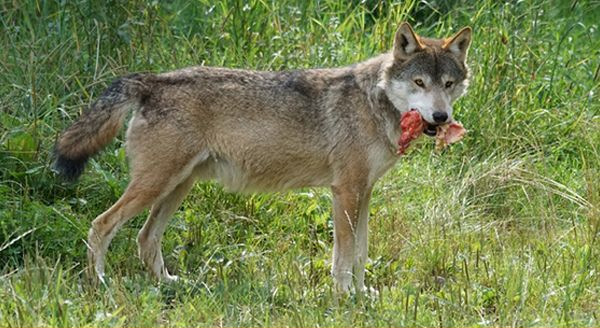
Coyotes Hunting in Mating Season
Coyotes are known to be good hunters, and they become more proficient during their mating season. This is because they need to provide for their mate and potential offspring.
Male coyotes will typically hunt larger prey during this time. They will also provide food for the female coyote staying in the den with the pups. The female will hunt smaller prey, such as rodents and rabbits. They can bring other animals to their demise with keen vision and a strong sense of smell.
Coyotes have been known to travel up to 40 miles daily while searching for food. This is one of the many adaptations that help them survive in the wild.
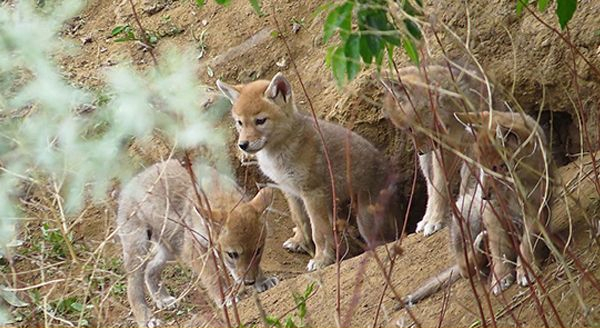
Den Digging of Coyote
One of the most exciting coyote adaptations is their ability to dig dens. The majority of these dens situate on hillsides, bluffs, or ravines. They will also use an abandoned burrow made by another animal.
Coyotes will line their den with grass, leaves, and other materials to make it comfortable. This may sometimes consist of a hollowed-out tree stump or rock outcrop.
The average den size is about .5 to 1.65 feet. But, the depth can vary depending on how far down the coyote decides to dig.
Dens are essential for raising pups since they provide a safe place to stay while their mother is hunting. It also protects them from harsh weather conditions and predators.
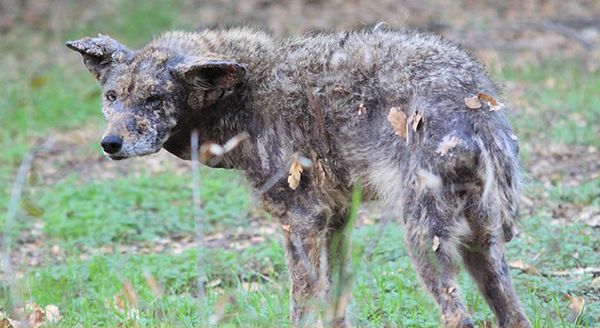
Need Help With Coyote On Your Property?
Aside from the threat to human health, coyotes can develop aggressive behaviors. Especially towards your pets during their mating season. When you feel uncomfortable and unsafe with the presence of these canids on your property, immediately call AAAC Wildlife Removal. With expert authorities and trained professionals, you can have them exit your property and prevent it from returning in no time!
You can consult our professionals for more information!
Final Thoughts?
Coyotes are native canids from North America. They are specifically adaptive creatures, being able to inhabit various habitats.
These canids can have as many as seven pups. They are born blind and dependent, making them classified as altricial. This exciting moment of coyote pup-raising season happens after they mate from February to early March. However, this can significantly depend on their location.
Coyote mating season is a time to be extra cautious of these canids. Although they are typically shy creatures, they become more aggressive and territorial during this time. Taking care of your pets (especially small dogs and cats) and not leaving them unattended outside is essential. If you have any questions or concerns about coyotes on your property, don’t hesitate to get in touch with AAAC Wildlife Removal.









